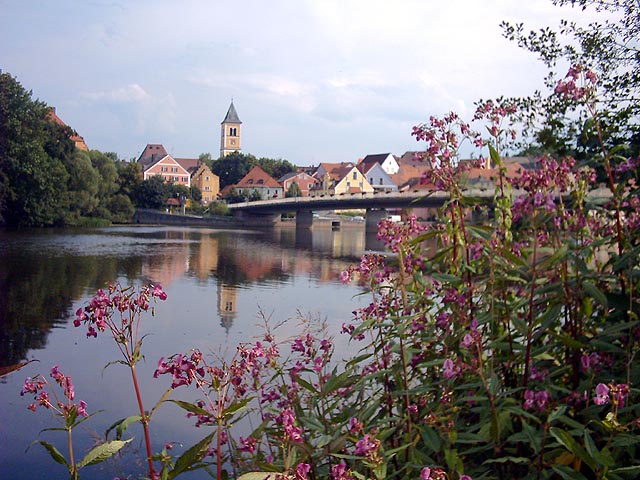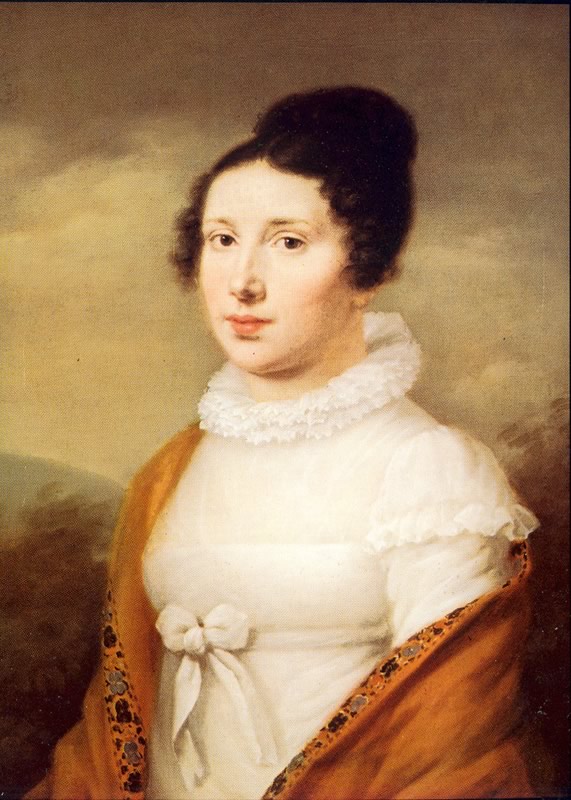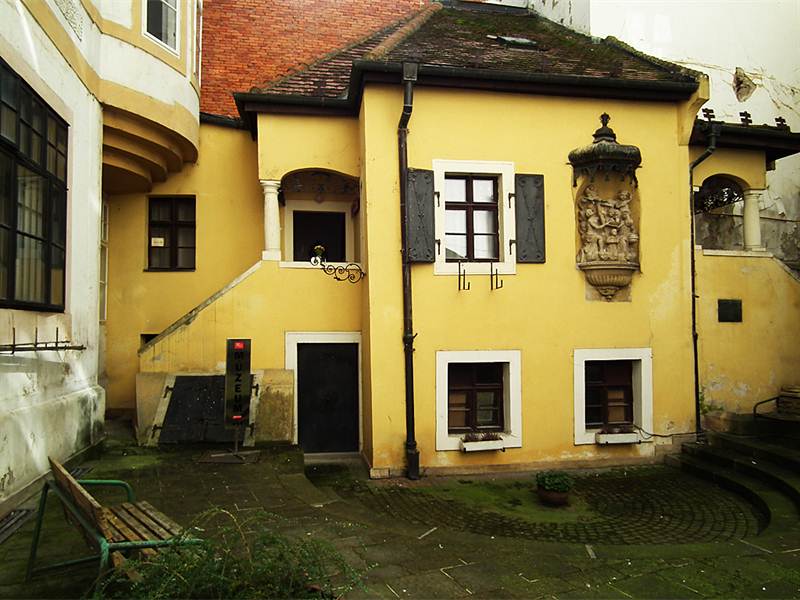|
Neunburg Vorm Wald
Neunburg vorm Wald is a municipality in the district of Schwandorf, in Bavaria, Germany. It is situated 21 km east of Schwandorf on the river Schwarzach, a tributary of the Naab. Mayor The mayor is Martin Birner (CSU). He was elected in 2014 with 77,98 % of the votes, and re-elected in 2020. Population development Population development (with incorporations): Sons and daughters of the town * Johann Agricola (1590-1668), physician, alchemist and saline expert * Elisabeth Röckel (1793-1883), opera singer, wife of Johann Nepomuk Hummel * Gregor von Scherr Archbishop Gregor Leonhard Andreas von Scherr (22 June 1804 – 24 October 1877), OSB was Archbishop of Munich and Freising from 1856 until 1877. Biography Born on 22 June 1804, Neunburg vorm Wald, he was ordained on 4 August 1829, aged 25 as a ... (1804-1877), Archbishop of Munich and Freising, name giver for the local school References {{DEFAULTSORT:Neunburg Vorm Wald Schwandorf (district) ... [...More Info...] [...Related Items...] OR: [Wikipedia] [Google] [Baidu] |
Ortsteil
A village is a clustered human settlement or Residential community, community, larger than a hamlet (place), hamlet but smaller than a town (although the word is often used to describe both hamlets and smaller towns), with a population typically ranging from a few hundred to a few thousand. Though villages are often located in rural areas, the term urban village is also applied to certain urban neighborhoods. Villages are normally permanent, with fixed dwellings; however, transient villages can occur. Further, the dwellings of a village are fairly close to one another, not scattered broadly over the landscape, as a dispersed settlement. In the past, villages were a usual form of community for societies that practice subsistence agriculture, and also for some non-agricultural societies. In Great Britain, a hamlet earned the right to be called a village when it built a Church (building), church. [...More Info...] [...Related Items...] OR: [Wikipedia] [Google] [Baidu] |
Bayerisches Landesamt Für Statistik
The statistical offices of the German states (German language, German: ''Statistische Landesämter'') carry out the task of collecting official statistics in Germany together and in cooperation with the Federal Statistical Office of Germany, Federal Statistical Office. The implementation of statistics according to Article 83 of the Basic Law for the Federal Republic of Germany, constitution is executed at state level. The Bundestag, federal government has, under Article 73 (1) 11. of the constitution, the exclusive legislation for the "statistics for federal purposes." There are 14 statistical offices for the States of Germany, 16 states: See also * Federal Statistical Office of Germany References {{Reflist National statistical services, Germany Lists of organisations based in Germany, Statistical offices Official statistics, Germany ... [...More Info...] [...Related Items...] OR: [Wikipedia] [Google] [Baidu] |
Municipalities Of Germany
MunicipalitiesCountry Compendium. A companion to the English Style Guide European Commission, May 2021, pages 58–59. (german: Gemeinden, ) are the lowest level of official territorial division in . This can be the second, third, fourth or fifth level of territorial division, depending on the status of the municipality and the '''' (federal state) it ... [...More Info...] [...Related Items...] OR: [Wikipedia] [Google] [Baidu] |
Schwandorf (district)
Schwandorf is a ''Landkreis'' (district) in Upper Palatinate The Upper Palatinate (german: Oberpfalz, , ) is one of the seven administrative districts of Bavaria, Germany, and is located in the east of Bavaria. Geography The Upper Palatinate is a landscape with low mountains and numerous ponds and lakes ... in the eastern part of Bavaria, Germany. Neighboring districts are (from the east clockwise) Cham (district), Cham, Regensburg (district), Regensburg, Neumarkt (district), Neumarkt, Amberg-Sulzbach, Neustadt an der Waldnaab (district), Neustadt an der Waldnaab, and the Czech Republic, Czech Plzeň Region. Geography The main rivers of the district are the Naab and the Regen (river), Regen. Climate The Climate in this area has mild differences between highs and lows, and there is adequate rainfall year-round. The Köppen Climate Classification subtype for this climate is "Köppen climate classification#GROUP C: Mild Temperate/mesothermal climates, Cfb". (Marine West Coast ... [...More Info...] [...Related Items...] OR: [Wikipedia] [Google] [Baidu] |
Bavaria
Bavaria ( ; ), officially the Free State of Bavaria (german: Freistaat Bayern, link=no ), is a state in the south-east of Germany. With an area of , Bavaria is the largest German state by land area, comprising roughly a fifth of the total land area of Germany. With over 13 million inhabitants, it is second in population only to North Rhine-Westphalia, but due to its large size its population density is below the German average. Bavaria's main cities are Munich (its capital and largest city and also the third largest city in Germany), Nuremberg, and Augsburg. The history of Bavaria includes its earliest settlement by Iron Age Celtic tribes, followed by the conquests of the Roman Empire in the 1st century BC, when the territory was incorporated into the provinces of Raetia and Noricum. It became the Duchy of Bavaria (a stem duchy) in the 6th century AD following the collapse of the Western Roman Empire. It was later incorporated into the Holy Roman Empire, became an ind ... [...More Info...] [...Related Items...] OR: [Wikipedia] [Google] [Baidu] |
Germany
Germany,, officially the Federal Republic of Germany, is a country in Central Europe. It is the second most populous country in Europe after Russia, and the most populous member state of the European Union. Germany is situated between the Baltic and North seas to the north, and the Alps to the south; it covers an area of , with a population of almost 84 million within its 16 constituent states. Germany borders Denmark to the north, Poland and the Czech Republic to the east, Austria and Switzerland to the south, and France, Luxembourg, Belgium, and the Netherlands to the west. The nation's capital and most populous city is Berlin and its financial centre is Frankfurt; the largest urban area is the Ruhr. Various Germanic tribes have inhabited the northern parts of modern Germany since classical antiquity. A region named Germania was documented before AD 100. In 962, the Kingdom of Germany formed the bulk of the Holy Roman Empire. During the 16th ce ... [...More Info...] [...Related Items...] OR: [Wikipedia] [Google] [Baidu] |
Schwandorf
Schwandorf is a town on the river Naab in the Upper Palatinate, Bavaria, Germany, which is the seat of the Schwandorf district. Sights * Catholic parish church of St. Jakob * Kreuzberg Church: Catholic parish, monastic and pilgrimage church of Mary Help of Christians on the Kreuzberg Politics Schwandorf (electoral district) Sports The towns association football club, 1. FC Schwandorf, experienced its greatest success in the late 1950s and 1960 when it spent thirteen seasons in the third division Bayernliga. Twin towns – sister cities Schwandorf is twinned with: * Libourne Libourne (; oc, label= Gascon, Liborna ) is a commune in the Gironde department in Nouvelle-Aquitaine in southwestern France. It is a sub-prefecture of the department. It is the wine-making capital of northern Gironde and lies near Saint-Émil ..., France * Sokolov, Czech Republic References Schwandorf (district) {{Schwandorfdistrict-geo-stub ... [...More Info...] [...Related Items...] OR: [Wikipedia] [Google] [Baidu] |
Naab
__NOTOC__ The Naab (Czech: ''Nába'') is a river in Bavaria, Germany, and is a left tributary of the Danube. Including its main source river Waldnaab, it is long. Its average discharge at the mouth is . The Naab is formed by the confluence of the Waldnaab and the Haidenaab in Luhe-Wildenau, south of Weiden in der Oberpfalz. It flows generally south, through the towns Nabburg, Schwandorf and Burglengenfeld. It flows into the Danube near Regensburg. See also *List of rivers of Bavaria A list of rivers of Bavaria, Germany: A * Aalbach *Abens * Ach * Afferbach * Affinger Bach * Ailsbach *Aisch * Aiterach *Alpbach *Alster * Altmühl *Alz * Amper * Anlauter * Arbach * Arbachgraben *Aschaff * Aschbach * Attel * Aubach, tributary of ... References Sources * ''Die Naab – mit Waldnaab, Fichtelnaab, Haidenaab.'' (2004) Luftbildband, 132 Seiten, Pustet, Regensburg, 2004. * ''Die Naab – Leben am Fluß im Wandel der Zeit.'' (1998) Buch & Kunstverlag Oberpfalz, Amberg,´ Externa ... [...More Info...] [...Related Items...] OR: [Wikipedia] [Google] [Baidu] |
Johann Agricola
Johann or Johannes Agricola (originally Schneider, then Schnitter; 20 April 1494 – 22 September 1566)John Julian: Dictionary of Hymnology, Second Edition, page 19. London: John Murray, 1907. was a German Protestant Reformer during the Protestant Reformation. He was a follower and friend of Martin Luther, who became his antagonist in the matter of the binding obligation of the law on Christians. Biography Early life Agricola was born at Eisleben, whence he is sometimes called Magister Islebius. He studied at Wittenberg, where he soon gained the friendship of Martin Luther. In 1519 he accompanied Luther to the great assembly of German divines at Leipzig, and acted as recording secretary. After teaching for some time in Wittenberg, he went to Frankfurt in 1525 to establish the Protestant mode of worship. He had resided there only a month when he was called to Eisleben, where he remained until 1526 as teacher in the school of St Andrew, and preacher in the Nicolai church. Cont ... [...More Info...] [...Related Items...] OR: [Wikipedia] [Google] [Baidu] |
Elisabeth Röckel
Elisabeth Röckel (15 March 1793 – 3 March 1883) was a German soprano opera singer and the wife of the composer Johann Nepomuk Hummel. Life Röckel was born in Neunburg vorm Wald, Bavaria, and baptised Maria Eva. She was a sister of the opera singer Joseph August Röckel (1783–1870) who played Florestan in the second version of Beethoven’s opera ''Fidelio'', which premiered in the Theater an der Wien in 1806. In the same year she came to Vienna, too, where she lived in a flat in the theater, together with her brother. In a register of the residents of the theater she is named "Elis Rökel". According to this register in another flat of the theater lived the famous singer Anna Milder-Hauptmann with her family, who played the title role of ''Fidelio''. She became a close friend of Elisabeth. Many sources show that Elisabeth often met Beethoven who fell in love with the beautiful young girl and wanted to marry her. However, in April 1810 Elisabeth Röckel got an engagem ... [...More Info...] [...Related Items...] OR: [Wikipedia] [Google] [Baidu] |
Johann Nepomuk Hummel
Johann Nepomuk Hummel (14 November 177817 October 1837) was an Austrian composer and virtuoso pianist. His music reflects the Transition from Classical to Romantic music, transition from the Classical period (music), Classical to the Romantic music, Romantic musical era. He was a pupil of Mozart, Salieri and Muzio Clementi, Clementi. He also knew Beethoven and Schubert. Life Early life Hummel was born as an only child (which was unusual for that period) in Pressburg, Kingdom of Hungary (now Bratislava, Slovakia). He was named after the Czech patron saint John of Nepomuk. His father, Johannes Hummel, was the director of the Imperial School of Military Music in Vienna; his mother, Margarethe Sommer Hummel, was the widow of the wigmaker Josef Ludwig. The couple married just four months beforehand. Hummel was a child prodigy. At the age of eight, he was offered music lessons by the classical composer Wolfgang Amadeus Mozart, who was impressed with his ability. Hummel was taught ... [...More Info...] [...Related Items...] OR: [Wikipedia] [Google] [Baidu] |
Gregor Von Scherr
Archbishop Gregor Leonhard Andreas von Scherr (22 June 1804 – 24 October 1877), OSB was Archbishop of Munich and Freising from 1856 until 1877. Biography Born on 22 June 1804, Neunburg vorm Wald, he was ordained on 4 August 1829, aged 25 as a priest of Regensburg, Germany by Cardinal Antonio Saverio De Luca. On 29 December 1833, aged 29, he joined the Order of Saint Benedict (OSB) and later became Abbot of St. Michael's Abbey at Metten.Lins, Joseph. "Munich-Freising." The Catholic Encyclopedia Vol. 10. New York: Robert Appleton Company, 1911. 25 January 2019 On 6 January 1856, aged 51, he was appointed Archbishop of Munich and Freising
[...More Info...] [...Related Items...] OR: [Wikipedia] [Google] [Baidu] |





